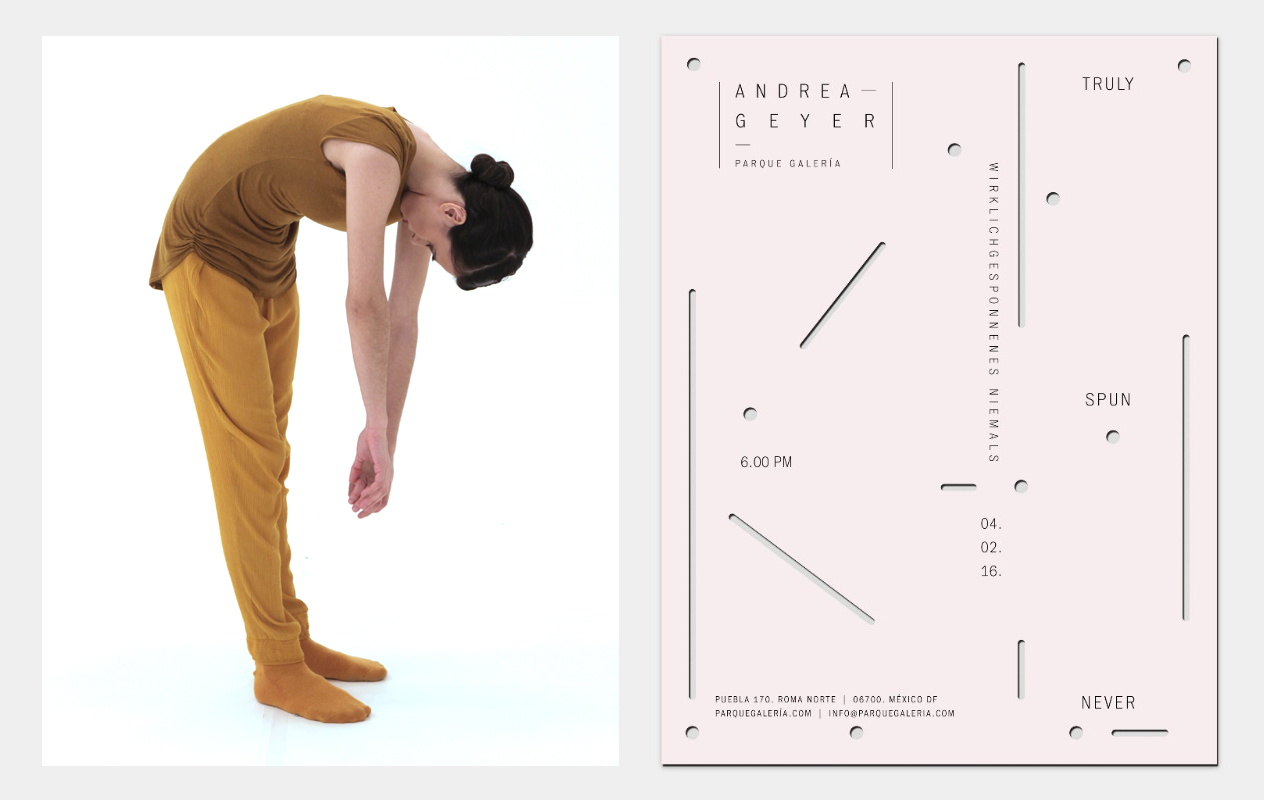Faculty Andrea Geyer has a Solo Show at Parque Galeria, Mexico
TRULY SPUN NEVER
February 4th – April 16th 2016
Parque Galería
Puebla 170. Roma Norte
06700, México DF
Opening Reception: Thursday, February 4, 2016. 6pm.

Andrea Geyer’s first solo show in Mexico City presents three bodies of recent works: Asterism, a group of collages re-envisioning the women of the Bauhaus; Travels on Slender Thread, a group of paintings evoking women’s contribution to Modernism and Truly Spun Never, a three-channel video installation based on the history of Modern Dance in Germany, that addresses complex questions of the proximities of culture and ideology. This video is a commission by the Museum der Moderne, Salzburg in collaboration with the Derra de Moroda Dance Archive and generously supported by a Foundation for Contemporary Art Emergency Grant.
Andrea Geyer has been invested in the construction of time in the intersection of politics, culture and history for more then a decade now. With a particular focus on women (or those who are or have been identified as such), her works engage specifically potent events to invite a collective reflection on the politics and ideologies of temporal translations as well as the omissions happening along side. Her works — that employ methodologies of performance, theater, journalism and poetry — activate the lingering potentials that lie in this complex economy of time and expose a wealth of uncontainable, disruptive knowledge.
For Truly Spun Never, Geyer expands her recent interest in Modernism through an investigation of the origins of modern dance in Europe from the 1910s to the 1930s. Given the rise of National Socialism in Germany, the birthplace of Ausdruckstanz (Expressive Dance), Truly Spun Never unpacks the difficult relationships between culture and ideology, between expression and ethics, between a body and politics. Ausdruckstanz, became in Nazi Germany “German dance” and the predominant dance form even when other modern forms of art had been categorized: degenerate. From 1933 to 1936 Rudolf von Laban, notable as one of the pioneers of modern dance in Europe, controlled dance throughout Germany as part of Joseph Goebble’s ministry of propaganda. Even when financed by the propaganda ministry and after removing all “non-Arian” dancers from stage and dance schools, Laban as well as other leading choreographers and dancers of the time insisted that dance should lay beyond the grasp of politics.
Geyer’s Truly Spun Never portrays the interactions between a critic and six dancers training different forms of spins. The critic oscillates between a reflection on dance as a form, its potentials and shortcomings, and contemplative readings of poems by Paul Celan, who functions as a contemporary witness to 1930s Europe. Geyer’s script is based on her signature methodology of working with found materials and original writings of the time period, in this case writings of the key players such as Mary Wigman, Rudolf von Laban, Fritz Böhm, Joseph Goebbles and Frederica Derra de Moroda. Through these multilayered interactions of movement and language, Truly Spun Never maps the terrain in which cultural expression gets infiltrated by ideological violence. The work suggests the need for an immanent response to the historical figures of modern dance but also to their legacy and their contemporary audiences.
The intimate collages of Asterism combine photographs of women active at the Bauhaus in Dessau as teachers and students until 1933 with Joseph Albers’ Constellation drawings from the 1950s. The faces of the women appear as a prism when layered with Albers’ drawings, thinking through the fate of many of them as seen only through the lens of their male counterparts.
Travels on Slender Thread, undoubtedly the most lyrical pieces of this exhibition, materialize a set of poems written by Geyer as part of her recent work Time Tenderness, commissioned for the opening of the new Whitney Museum of American Art in New York in 2015. The poems are based on Geyer’s expansive research in women’s contribution to Modernism. Appearing as a script to be performed as well as a transcript of something that happened, the associative words press through the surface of the painting, seemingly moving forward and backward in time. Their bodily presence and skin like texture offer a viewer a mirror to unfold within their poetic prepositions .
